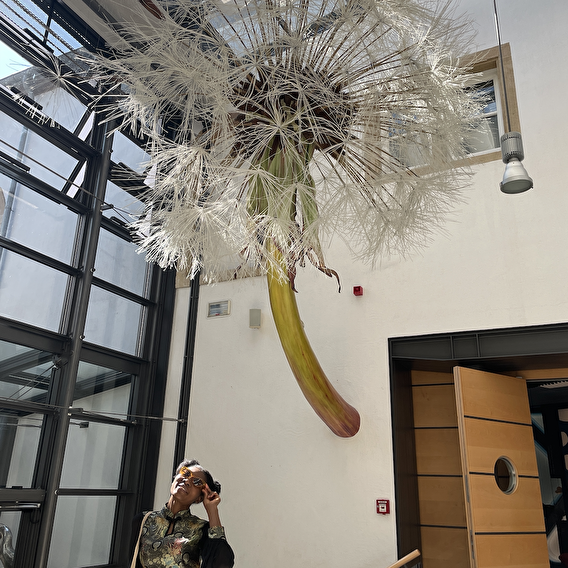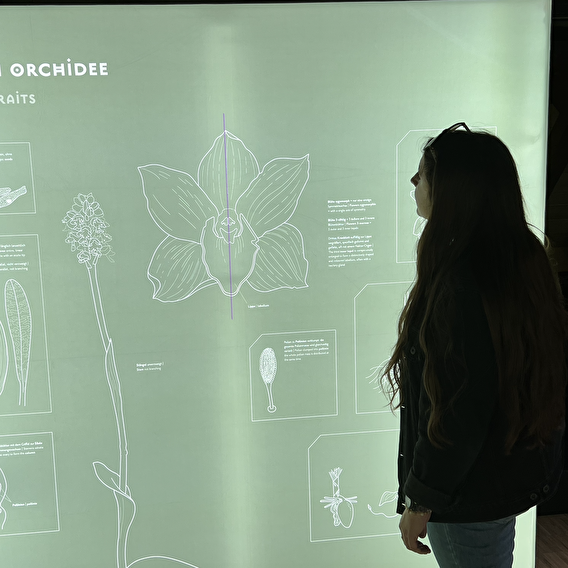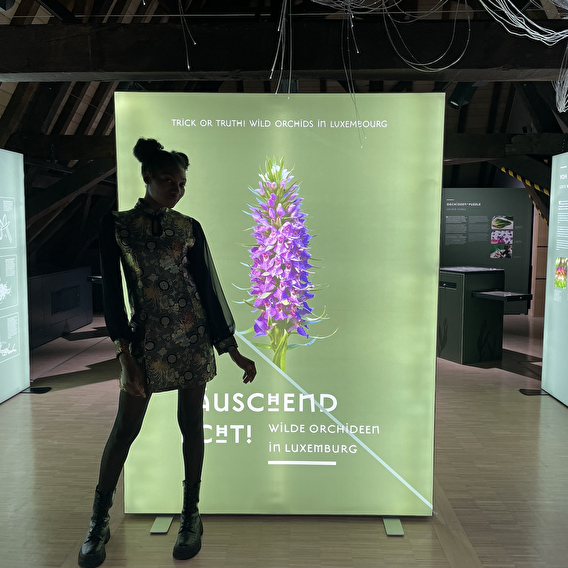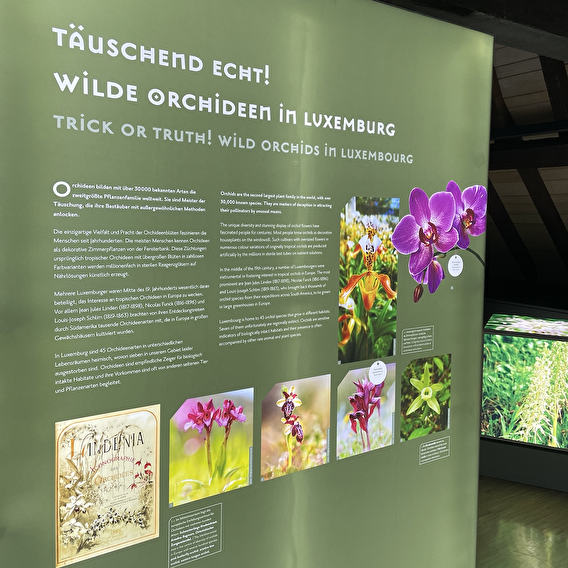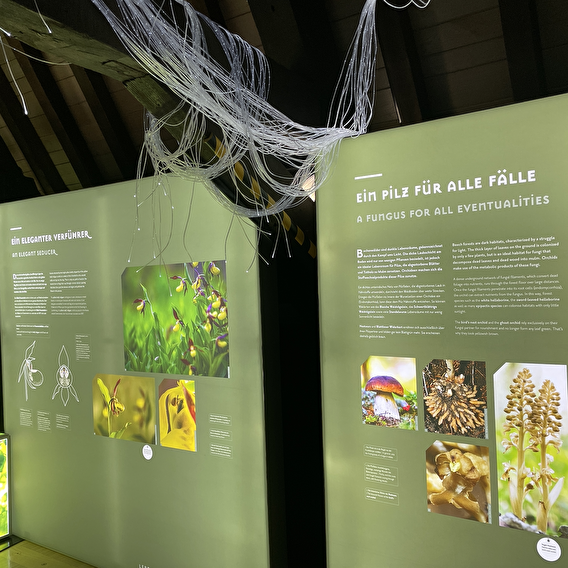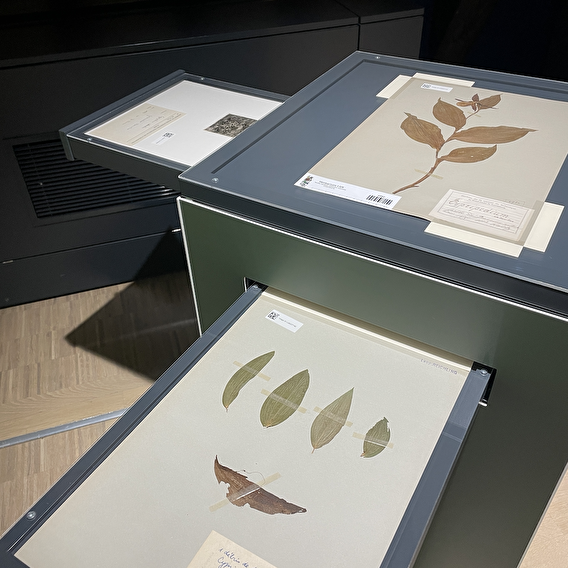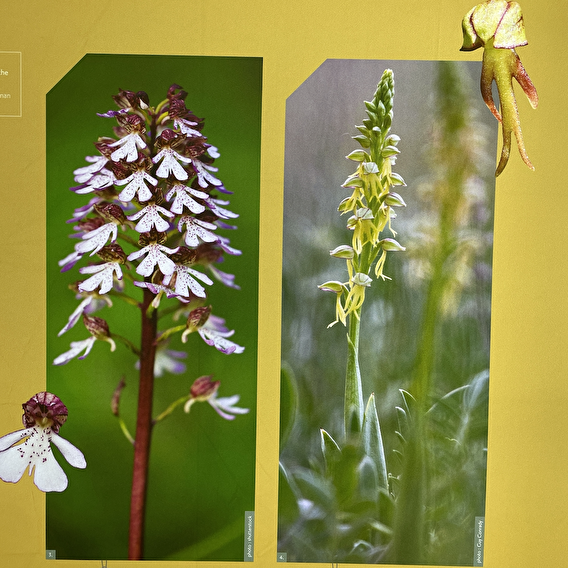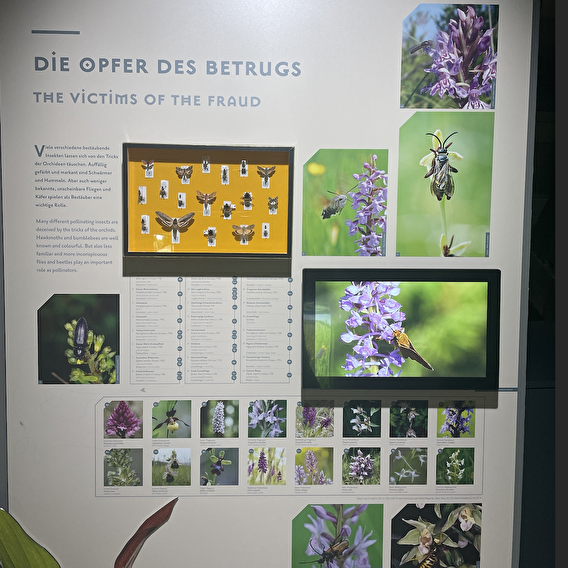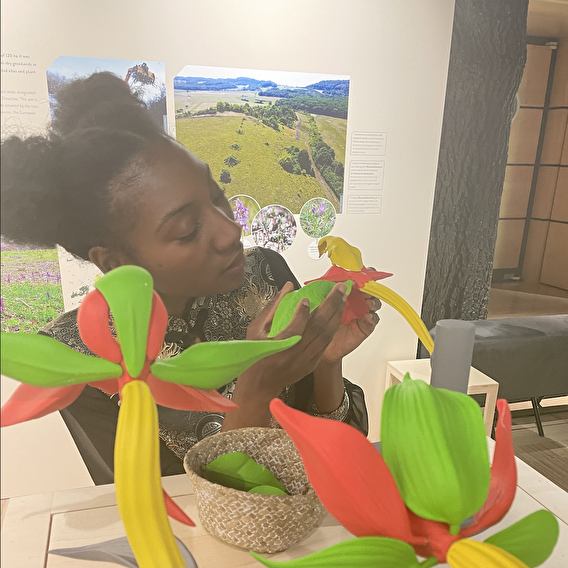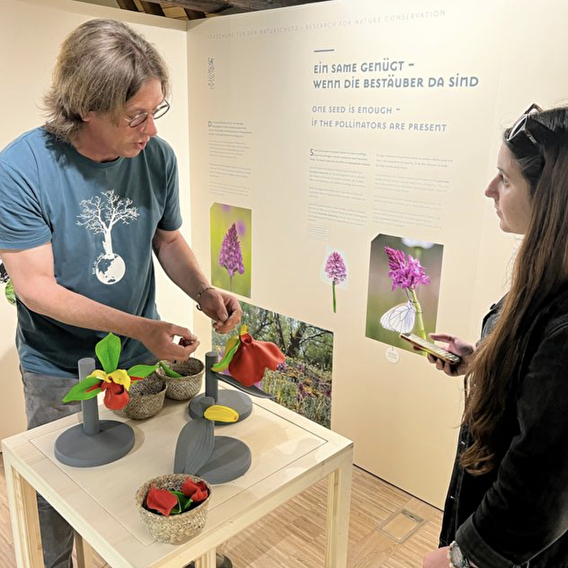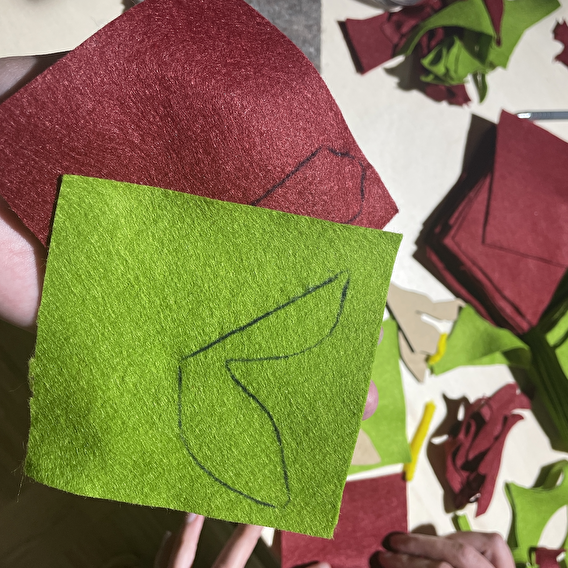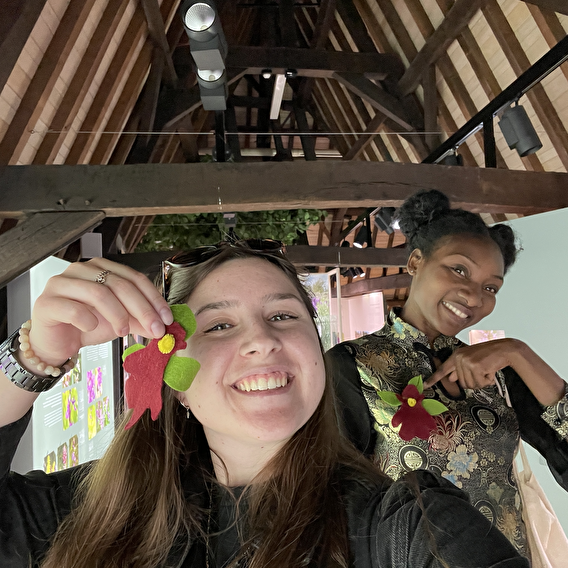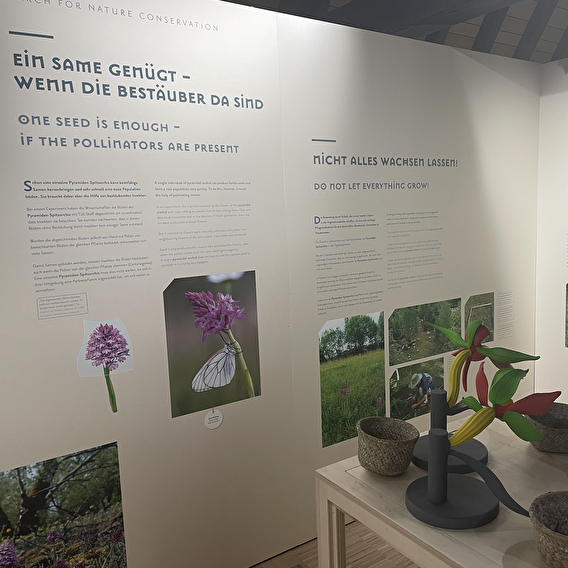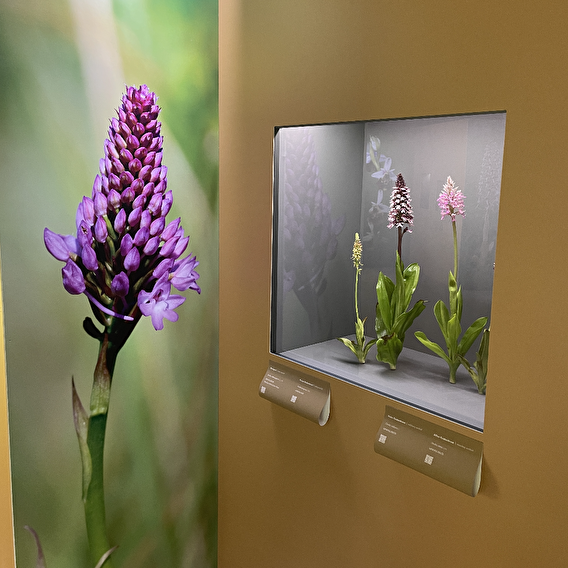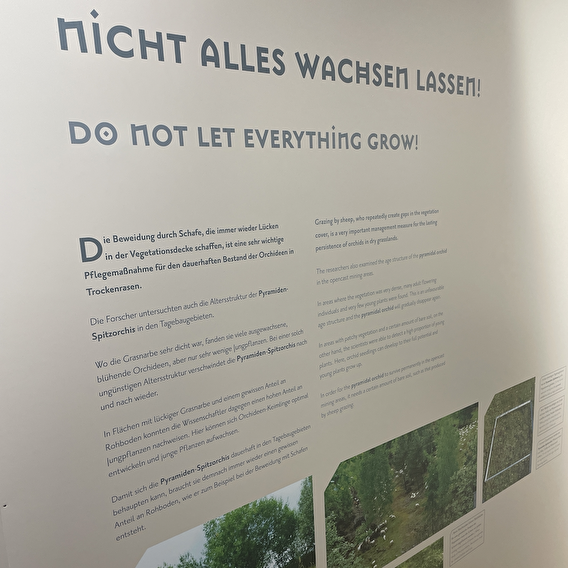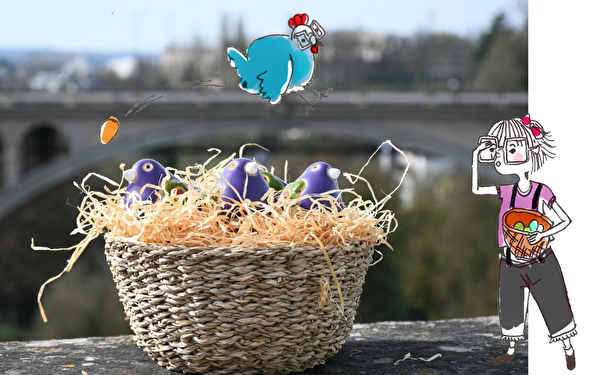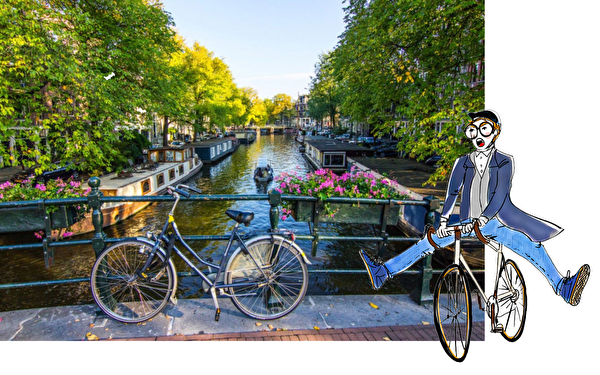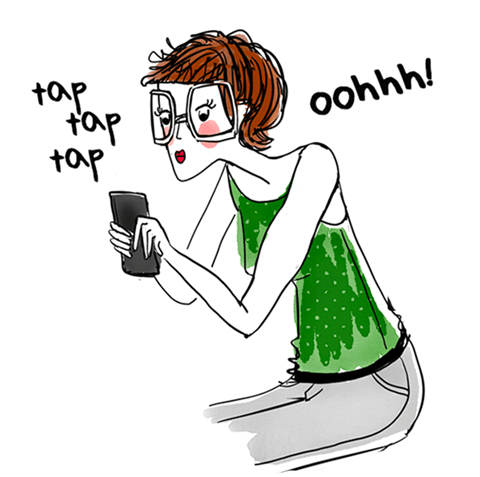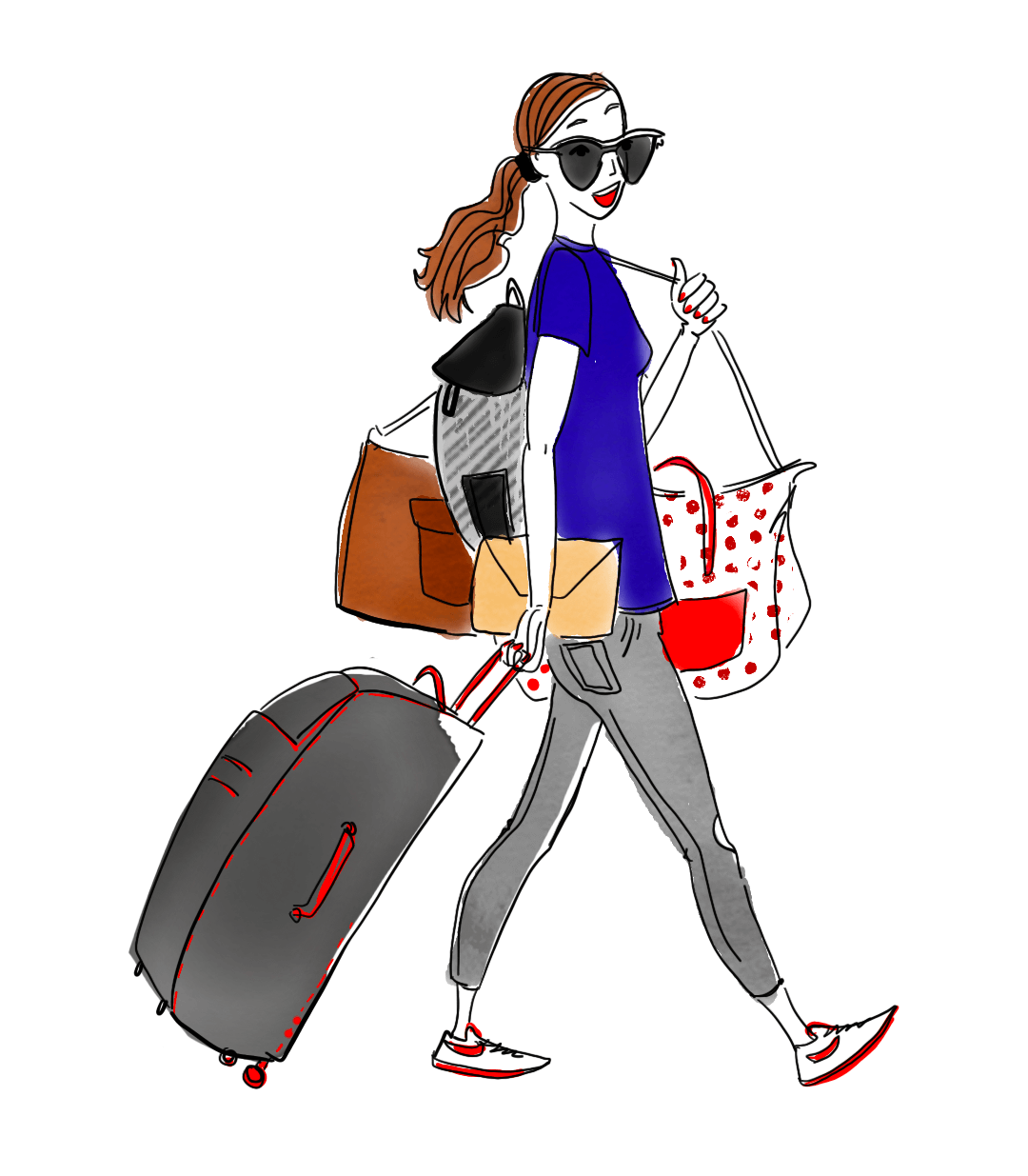Publication date: 2023-05-31
Collaborative Content
The colorful world of orchids 💐
The colorful world of orchids 💐
The MNHN - Musée Nationale d'Histoire Naturelle is hosting an irresistible new exhibition ☀️ from May 26 to August 27: superSylvie and superLaura take you on a tour of Luxembourg's 45 species of wild orchids. One thing's for sure, you'll be impressed ⬇️
The MNHN - Musée Nationale d'Histoire Naturelle is hosting an irresistible new exhibition ☀️ from May 26 to August 27: superSylvie and superLaura take you on a tour of Luxembourg's 45 species of wild orchids. One thing's for sure, you'll be impressed ⬇️
The MNHN - Musée Nationale d'Histoire Naturelle is hosting an irresistible new exhibition ☀️ from May 26 to August 27: superSylvie and superLaura take you on a tour of Luxembourg's 45 species of wild orchids. One thing's for sure, you'll be impressed ⬇️
The MNHN - Musée Nationale d'Histoire Naturelle is hosting an irresistible new exhibition ☀️ from May 26 to August 27: superSylvie and superLaura take you on a tour of Luxembourg's 45 species of wild orchids. One thing's for sure, you'll be impressed ⬇️
___
YOUR VISIT STARTS AT THE ROOT
Head for the museum's 2nd floor, which is accessible either by stairs or elevator. The exhibition begins by introducing you to the 45 different species of orchid you can find in Luxembourg. With over 30,000 different known species, they are the 2nd largest plant family in the world 🌍
When we talk about orchids, we're not talking about the so-called "domestic" ones you give your mom for Mother's Day, but "wild" or even "native" orchids, which you can find in the plains, paths and forests of the Grand Duchy.
You can stroll around at your own pace, using the QR codes (in French 🇫🇷, English 🇺🇸 and German 🇩🇪) which contain information about the exhibition, or take part in a guided tour with the museum's superb staff.
___
YOUR VISIT STARTS AT THE ROOT
Head for the museum's 2nd floor, which is accessible either by stairs or elevator. The exhibition begins by introducing you to the 45 different species of orchid you can find in Luxembourg. With over 30,000 different known species, they are the 2nd largest plant family in the world 🌍
When we talk about orchids, we're not talking about the so-called "domestic" ones you give your mom for Mother's Day, but "wild" or even "native" orchids, which you can find in the plains, paths and forests of the Grand Duchy.
You can stroll around at your own pace, using the QR codes (in French 🇫🇷, English 🇺🇸 and German 🇩🇪) which contain information about the exhibition, or take part in a guided tour with the museum's superb staff.
___
YOUR VISIT STARTS AT THE ROOT
Head for the museum's 2nd floor, which is accessible either by stairs or elevator. The exhibition begins by introducing you to the 45 different species of orchid you can find in Luxembourg. With over 30,000 different known species, they are the 2nd largest plant family in the world 🌍
When we talk about orchids, we're not talking about the so-called "domestic" ones you give your mom for Mother's Day, but "wild" or even "native" orchids, which you can find in the plains, paths and forests of the Grand Duchy.
You can stroll around at your own pace, using the QR codes (in French 🇫🇷, English 🇺🇸 and German 🇩🇪) which contain information about the exhibition, or take part in a guided tour with the museum's superb staff.
___
YOUR VISIT STARTS AT THE ROOT
Head for the museum's 2nd floor, which is accessible either by stairs or elevator. The exhibition begins by introducing you to the 45 different species of orchid you can find in Luxembourg. With over 30,000 different known species, they are the 2nd largest plant family in the world 🌍
When we talk about orchids, we're not talking about the so-called "domestic" ones you give your mom for Mother's Day, but "wild" or even "native" orchids, which you can find in the plains, paths and forests of the Grand Duchy.
You can stroll around at your own pace, using the QR codes (in French 🇫🇷, English 🇺🇸 and German 🇩🇪) which contain information about the exhibition, or take part in a guided tour with the museum's superb staff.
___
HERBARIUMS, MODELS, SCULPTURES...
In addition to the information on the various paintings in the exhibition, you'll be able to admire the real archives of the MNHN herbarium 🪴. And now you're going to tell us "but what's a herbarium? Well, it's a scientific tool that serves as a reference for plant identification. In a nutshell, you'll find dried flowers, along with the date they were picked, where they were collected, their particularities... Just think, some samples date back to 1940!
Throughout the aisles, you can also spot some splendid sculptures on display with orchids in their natural environments 💐, created by the talented Sebastian Brandt. There are even added taxidermy elements like little field mice to make the model more alive and real.
If we tell you they're made from resin and silicone only (and not dried flowers) will you believe us?
___
HERBARIUMS, MODELS, SCULPTURES...
In addition to the information on the various paintings in the exhibition, you'll be able to admire the real archives of the MNHN herbarium 🪴. And now you're going to tell us "but what's a herbarium? Well, it's a scientific tool that serves as a reference for plant identification. In a nutshell, you'll find dried flowers, along with the date they were picked, where they were collected, their particularities... Just think, some samples date back to 1940!
Throughout the aisles, you can also spot some splendid sculptures on display with orchids in their natural environments 💐, created by the talented Sebastian Brandt. There are even added taxidermy elements like little field mice to make the model more alive and real.
If we tell you they're made from resin and silicone only (and not dried flowers) will you believe us?
___
HERBARIUMS, MODELS, SCULPTURES...
In addition to the information on the various paintings in the exhibition, you'll be able to admire the real archives of the MNHN herbarium 🪴. And now you're going to tell us "but what's a herbarium? Well, it's a scientific tool that serves as a reference for plant identification. In a nutshell, you'll find dried flowers, along with the date they were picked, where they were collected, their particularities... Just think, some samples date back to 1940!
Throughout the aisles, you can also spot some splendid sculptures on display with orchids in their natural environments 💐, created by the talented Sebastian Brandt. There are even added taxidermy elements like little field mice to make the model more alive and real.
If we tell you they're made from resin and silicone only (and not dried flowers) will you believe us?
___
HERBARIUMS, MODELS, SCULPTURES...
In addition to the information on the various paintings in the exhibition, you'll be able to admire the real archives of the MNHN herbarium 🪴. And now you're going to tell us "but what's a herbarium? Well, it's a scientific tool that serves as a reference for plant identification. In a nutshell, you'll find dried flowers, along with the date they were picked, where they were collected, their particularities... Just think, some samples date back to 1940!
Throughout the aisles, you can also spot some splendid sculptures on display with orchids in their natural environments 💐, created by the talented Sebastian Brandt. There are even added taxidermy elements like little field mice to make the model more alive and real.
If we tell you they're made from resin and silicone only (and not dried flowers) will you believe us?
___
QUEENS OF CHEAT
You may be wondering why the exhibition is called that? Well, orchids are masters of cheat when it comes to flower pollination.
What's that? You don't know how flowers pollinate? OK bloomer, sit tight, we'll explain it to you in 2-3 petals... Male + female = baby bloom! 🪄
For a flower to reproduce, it has to disperse its pollen all over the place. This nectar is usually stored inside the flower, on the pistil. And that's when the pollinating insects ; like bees and butterflies 🦋 come in: it's up to them to disperse the pollen from one plant to another.
To attract these pollinators, orchids need to be full of originality. What's special about them? Taking on the appearance of female pollinators 🐝, in order to attract males and cover them with pollen, one way or another. Real chameleons!
___
QUEENS OF CHEAT
You may be wondering why the exhibition is called that? Well, orchids are masters of cheat when it comes to flower pollination.
What's that? You don't know how flowers pollinate? OK bloomer, sit tight, we'll explain it to you in 2-3 petals... Male + female = baby bloom! 🪄
For a flower to reproduce, it has to disperse its pollen all over the place. This nectar is usually stored inside the flower, on the pistil. And that's when the pollinating insects ; like bees and butterflies 🦋 come in: it's up to them to disperse the pollen from one plant to another.
To attract these pollinators, orchids need to be full of originality. What's special about them? Taking on the appearance of female pollinators 🐝, in order to attract males and cover them with pollen, one way or another. Real chameleons!
___
QUEENS OF CHEAT
You may be wondering why the exhibition is called that? Well, orchids are masters of cheat when it comes to flower pollination.
What's that? You don't know how flowers pollinate? OK bloomer, sit tight, we'll explain it to you in 2-3 petals... Male + female = baby bloom! 🪄
For a flower to reproduce, it has to disperse its pollen all over the place. This nectar is usually stored inside the flower, on the pistil. And that's when the pollinating insects ; like bees and butterflies 🦋 come in: it's up to them to disperse the pollen from one plant to another.
To attract these pollinators, orchids need to be full of originality. What's special about them? Taking on the appearance of female pollinators 🐝, in order to attract males and cover them with pollen, one way or another. Real chameleons!
___
QUEENS OF CHEAT
You may be wondering why the exhibition is called that? Well, orchids are masters of cheat when it comes to flower pollination.
What's that? You don't know how flowers pollinate? OK bloomer, sit tight, we'll explain it to you in 2-3 petals... Male + female = baby bloom! 🪄
For a flower to reproduce, it has to disperse its pollen all over the place. This nectar is usually stored inside the flower, on the pistil. And that's when the pollinating insects ; like bees and butterflies 🦋 come in: it's up to them to disperse the pollen from one plant to another.
To attract these pollinators, orchids need to be full of originality. What's special about them? Taking on the appearance of female pollinators 🐝, in order to attract males and cover them with pollen, one way or another. Real chameleons!
___
WORKSHOPS NOT TO BE MISSED
To extend your visit and immerse yourself a little more fully in the world of orchids, the MNHN offers a range of workshops and tours. On the exhibition site, you can discover the anatomy of different orchid species thanks to assemblable figurines. Sylvie was into it! It allowed her to see the similarities and differences between species, and she recommends this fun activity 100% 🌱
The Happy Team's favorite: the workshop with which you can create your own orchid patch ✂️! Just look at the big smiles on our faces - we were having a blast, so proud of our creation! And what's more, it leaves you with a souvenir of the exhibition - how amazing is that?
For budding herbalists, walks with guides are organized all over the country to discover orchids in their natural environment, so you can put into practice and observe everything you've seen at the exhibition; it's the perfect workshop for an outing with "the petal on your stem".
The workshops are free and take place every weekend. During the vacations, workshops are held every day, perfect for piquing the curiosity of the youngest!
___
WORKSHOPS NOT TO BE MISSED
To extend your visit and immerse yourself a little more fully in the world of orchids, the MNHN offers a range of workshops and tours. On the exhibition site, you can discover the anatomy of different orchid species thanks to assemblable figurines. Sylvie was into it! It allowed her to see the similarities and differences between species, and she recommends this fun activity 100% 🌱
The Happy Team's favorite: the workshop with which you can create your own orchid patch ✂️! Just look at the big smiles on our faces - we were having a blast, so proud of our creation! And what's more, it leaves you with a souvenir of the exhibition - how amazing is that?
For budding herbalists, walks with guides are organized all over the country to discover orchids in their natural environment, so you can put into practice and observe everything you've seen at the exhibition; it's the perfect workshop for an outing with "the petal on your stem".
The workshops are free and take place every weekend. During the vacations, workshops are held every day, perfect for piquing the curiosity of the youngest!
___
WORKSHOPS NOT TO BE MISSED
To extend your visit and immerse yourself a little more fully in the world of orchids, the MNHN offers a range of workshops and tours. On the exhibition site, you can discover the anatomy of different orchid species thanks to assemblable figurines. Sylvie was into it! It allowed her to see the similarities and differences between species, and she recommends this fun activity 100% 🌱
The Happy Team's favorite: the workshop with which you can create your own orchid patch ✂️! Just look at the big smiles on our faces - we were having a blast, so proud of our creation! And what's more, it leaves you with a souvenir of the exhibition - how amazing is that?
For budding herbalists, walks with guides are organized all over the country to discover orchids in their natural environment, so you can put into practice and observe everything you've seen at the exhibition; it's the perfect workshop for an outing with "the petal on your stem".
The workshops are free and take place every weekend. During the vacations, workshops are held every day, perfect for piquing the curiosity of the youngest!
___
WORKSHOPS NOT TO BE MISSED
To extend your visit and immerse yourself a little more fully in the world of orchids, the MNHN offers a range of workshops and tours. On the exhibition site, you can discover the anatomy of different orchid species thanks to assemblable figurines. Sylvie was into it! It allowed her to see the similarities and differences between species, and she recommends this fun activity 100% 🌱
The Happy Team's favorite: the workshop with which you can create your own orchid patch ✂️! Just look at the big smiles on our faces - we were having a blast, so proud of our creation! And what's more, it leaves you with a souvenir of the exhibition - how amazing is that?
For budding herbalists, walks with guides are organized all over the country to discover orchids in their natural environment, so you can put into practice and observe everything you've seen at the exhibition; it's the perfect workshop for an outing with "the petal on your stem".
The workshops are free and take place every weekend. During the vacations, workshops are held every day, perfect for piquing the curiosity of the youngest!
___
WHAT YOU NEED TO KNOW
Of the 45 species still present in Luxembourg, 7 are unfortunately completely extinct. To limit this natural disaster, there are a few things you need to remember.
First of all, picking orchids in Luxembourg is forbidden by law ⚠️. These majestic flowers are precious habitats in terms of biodiversity, so they must be protected at all costs.
___
WHAT YOU NEED TO KNOW
Of the 45 species still present in Luxembourg, 7 are unfortunately completely extinct. To limit this natural disaster, there are a few things you need to remember.
First of all, picking orchids in Luxembourg is forbidden by law ⚠️. These majestic flowers are precious habitats in terms of biodiversity, so they must be protected at all costs.
___
WHAT YOU NEED TO KNOW
Of the 45 species still present in Luxembourg, 7 are unfortunately completely extinct. To limit this natural disaster, there are a few things you need to remember.
First of all, picking orchids in Luxembourg is forbidden by law ⚠️. These majestic flowers are precious habitats in terms of biodiversity, so they must be protected at all costs.
___
WHAT YOU NEED TO KNOW
Of the 45 species still present in Luxembourg, 7 are unfortunately completely extinct. To limit this natural disaster, there are a few things you need to remember.
First of all, picking orchids in Luxembourg is forbidden by law ⚠️. These majestic flowers are precious habitats in terms of biodiversity, so they must be protected at all costs.
See you at MNHN for the tour? 🐞
See you at MNHN for the tour? 🐞
See you at MNHN for the tour? 🐞
See you at MNHN for the tour? 🐞





